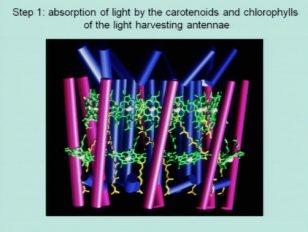Photosynthesis, Biomass, Biofuels: Conversion Efficiencies and Consequences

Presenter: Hartmut Michel
Published: July 2014
Age: 18-22 and upwards
Views: 1502 views
Tags: photosynthesis;biofuel;energy;efficiency
Type: Lectures
Source/institution: Lindau-Nobel
Watch now
It is generally accepted that the global warming, which we undoubtedly observe, is the result of an increased concentration of greenhouse gases like carbon dioxide and methane in the atmosphere. Within this scenario it is evident that we have to reduce the emissions of carbon dioxide in order to stop or to decrease global warming. It will be necessary to switch from energy mainly based on fossil energy with petrol, coal and natural gas as energy carriers to renewable energy. One big hope is the usage of biofuels like bioethanol, biodiesel, sundiesel, biogas and so on. Biofuels are obtained from biomass, and as such derived from the photosynthetic activity of recent years, whereas all fossil fuels are the result of the photosynthesis millions of years ago. In photosynthesis plants and algae use the energy of sunlight to take out carbon dioxide from the atmosphere and to synthesize sugars and other forms of biomass. The lecture will focus on the efficiencies of the individual steps in photosynthesis and discuss potential ways to improve their yield. The overall efficiency of photosynthesis is very low: less than one percent of the energy of sunlight is stored in the form of biomass, and there is not much hope for a substantial improvement. Biogas and biodiesel per area unit and year contain about 0.4 % of the energy of the sunlight, which the area unit has received in the same period. In addition at least 50 % of the energy which of biogas or of biodiesel had to be invested from conventional (fossil) energy sources to produce the biogas or biodiesel. Therefore, production and usage of biogas or biodiesel is not carbon dioxide neutral. By comparison, usage of photovoltaic cells is more efficient by a factor of 50 to 100 with respect to energy conversion, and electric engines are fourfold as efficient as combustion engines. Consequently driving a car using electric batteries, loaded by photovoltaic cells, and electric engines requires only 0.2 % of the land that would be required when driving a car with a combustion engines using biodiesel. Growing energy plants and biofuel production therefore is a very inefficient way of land use. The usage of biofuels made of palm oil or soy beans from tropical countries will enhance deforestation, lead to a loss of the tropical rain forest and increase climatic changes. In addition we shall lose biodiversity and many biological compounds which might help fighting human diseases. Most importantly, we need the land to feed an increasing population.





